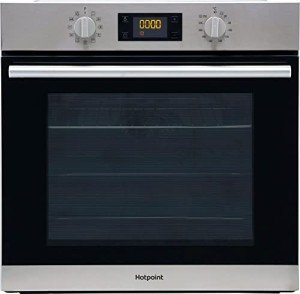Ovens have actually been a cornerstone of cooking ventures for centuries, supplying a vital appliance for both amateur cooks and professional chefs alike. As contemporary cooking areas develop, so too do the types of ovens readily available, each created to meet the varied needs of cooking enthusiasts. The following guide supplies an in-depth overview of various oven types, their features, and factors to consider to keep in mind when choosing the right oven for your kitchen.
When thinking about an oven for your kitchen, it is very important to comprehend the numerous types available. Each kind of oven has unique characteristics that can influence cooking methods and overall kitchen functionality.

Conventional ovens are the many standard type, often discovered in homes worldwide. They usually utilize either gas or electric power and use a simple cooking method.
Convection ovens are designed with a AEG 6000 Built-In Oven with Aqua Clean fan that distributes hot air around the food, leading to quicker cooking times and more even results.
Wall ovens are a popular option in modern kitchen areas, as they can be set up at eye level, conserving counter area and increasing availability.
Range ovens integrate both a cooking range (with burners) and an oven, supplying a compact solution for cooking areas with limited area.
Steam ovens use steam rather of dry heat, protecting moisture and nutrients in food.
When choosing an oven, think about the following functions that can improve cooking experiences:
| Feature | Description |
|---|---|
| Size | Ensure it fits your kitchen area and fulfills your cooking requires. |
| Self-Cleaning | Makes upkeep much easier, getting rid of the requirement for manual scrubbing. |
| Smart Technology | Ovens with Wi-Fi connectivity can streamline cooking through apps. |
| Temperature Range | A wider range can enhance cooking flexibility. |
| Safety Features | Functions such as automobile shut-off can improve kitchen safety. |
Choosing the best oven can sometimes be a complicated job. Here are a number of tips to simplify the process:
Identify Your Cooking Habits: Consider how frequently you cook and the types of meals you prepare. For instance, devoted bakers may prefer a stove for even baking, while those who cook roasts may lean towards a conventional oven.
Step Your Space: Before buying, measure the area where the oven will be put to guarantee it fits conveniently with your kitchen design.
Consider Your Budget: Ovens range extensively in price. It is essential to set a spending plan and consider the long-term value of the device.
Read Reviews: Online evaluations can provide insight into a design's performance and reliability gradually.
Inspect Energy Ratings: Energy-efficient models can save you cash on energy bills in the long run.
To maximize the life expectancy of your oven, correct maintenance is crucial. Follow these simple actions:
For small kitchen areas, wall ovens or compact range ovens are outstanding options as they use up less space and can be set up to suit readily available kitchen cabinetry.
Frequently examine the burners for obstructions and make sure that the oven's interior is cleaned to avoid buildup from spills and splatters.
Yes, many modern ovens enable both functions. Check the user manual for particular instructions on running your oven.
Initially, examine if it's correctly plugged in or if the gas is flowing. If problems persist, consult a professional to detect possible problems.
If cooking convenience and the latest technology appeal to you, purchasing a clever oven can be worthwhile, as they use a variety of enhanced cooking functions.
Choosing the right oven for your kitchen is essential to both the performance and enjoyment of your cooking experience. By considering the different types of ovens, important functions, and upkeep pointers, customers can make an educated decision that meets their culinary needs and choices. Whether you are a casual cook or an enthusiast, the best oven can significantly elevate your culinary adventures.
No Data Found!
